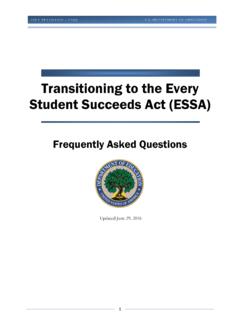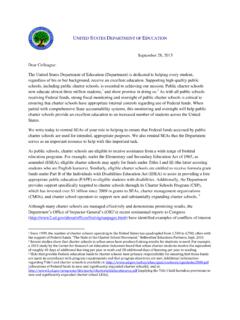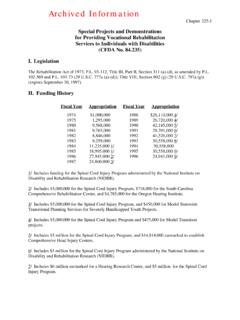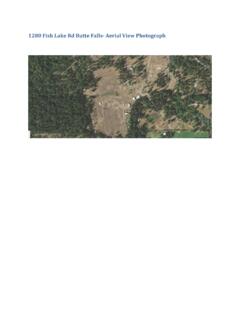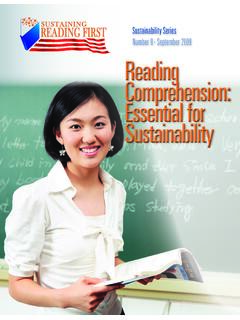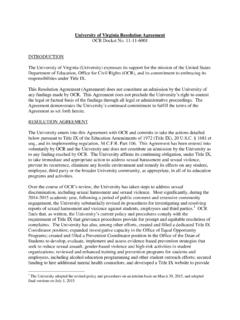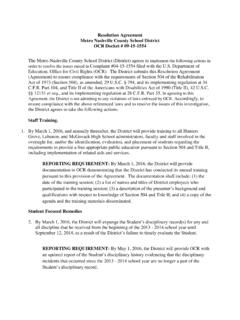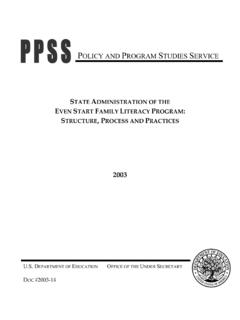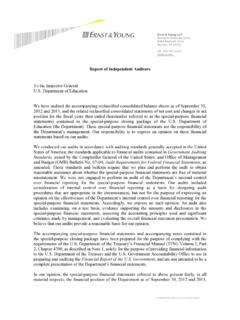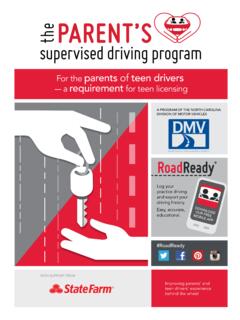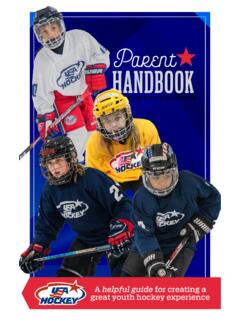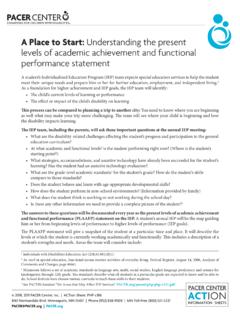Transcription of PERSONAL SAFETY FOR CHILDREN - ed
1 PERSONAL SAFETYFOR CHILDRENA GUIDE FOR PARENTSThe data on abducted CHILDREN contained in this report is taken from The Second National IncidenceStudies of Missing, Abducted, Runaway, and Thrownaway CHILDREN , known as NISMART-2, fundedunder a grant from the Department of Justice s Office of Juvenile Justice and DelinquencyPrevention. We are grateful to Heather Hammer, , Temple University Institute for SurveyResearch, Principal Investigator of NISMART-2, David Finkelhor, , University of New Hampshire,Crimes Against CHILDREN Research Center, and Andrea J. Sedlak, , and Dana J. Schultz, ,Westat, Inc.
2 , for performing this special materials in this publication have been adapted from the know theRulesbrochure series. Copyright 1998 National Center for Missing &Exploited CHILDREN . All rights YOU CAN DO TOPROTECT YOUR CHILDI ntroductionChildren are our Nation s most precious resource, but as CHILDREN , they often lack the skills toprotect themselves. It is our responsibility, as parents and teachers, to safeguard CHILDREN and toteach them the skills to be safe. This pamphlet is designed to help you talk to your CHILDREN abouthow to protect themselves against abduction and exploitation.
3 It is divided into several sections:WHAT ARE THE RISKS TO YOUR and figures on child abductionsHOW TO TALK TO YOUR CHILD ..4tips for discussing child safetyWHAT YOU CAN DO TO HELP YOUR for parents to help their CHILDREN stay safeWHAT YOUR CHILD CAN DO ..8in general, at home, and at schoolWHAT TO DO IN AN EMERGENCY ..12numbers to call and information to collectADDITIONAL RESOURCES FORPARENTS AND CHILDREN ..inside back coverwhere to go for more helpEvery home and school should teach CHILDREN about SAFETY and protection measures. As a par-ent, you should take an active interest in your CHILDREN and listen to them.
4 Teach your CHILDREN that theycan be assertive i n order to protect themselves against abduction and exploitation. And mostimportantly, make your home a place of trust and support that fulfills your child s needs. Togetherwe can protect our Nation s CHILDREN by teaching them to be smart, strong, and ARE THE RISKS TO YOUR CHILD facts and figures on child abductionsChildren of every age, gender, and race are vulnerable to child 203,900 CHILDREN were abducted in 1999 in family abductions in which a family member was trying to deprive a caretaker of custodial rights. 98% of these CHILDREN were located or returned home.
5 None of these CHILDREN were were approximately 58,200 non-family abductions in 1999. Abductions in this category involved forcibly moving or detaining the child for a relatively short period of time, usually in connection with another crime. 99% of these CHILDREN returned home. Only 115 of these were the most serious and dangerous types of abductions those perpetrated by strangers where the child was kept overnight, held for ransom, or killed. Almost 60% of these CHILDREN were returned the abductor is unrelated to the child, the abductor is just as likely to be someone known to the child or family as to be a Alert: Over 50% of the CHILDREN kidnapped in non-family abductions weretaken from the street, in a vehicle, or from a park or wooded area.
6 Almost 75%of those CHILDREN kidnapped in family abductions were taken from their own oranother s home or TO TALK TO YOUR CHILD tips for discussing child safetyWho? parent is the best person to teach a child aboutpersonal PERSONAL SAFETY ThinkingStrong Character Sticking TogetherWhen? and maturity is no perfect age when parents should begin teaching CHILDREN about PERSONAL child s ability to comprehend and practice SAFETY skills is affected by age, educational, and developmental your your CHILDREN s daily activities and to what they like and what they don t open communication.
7 Let your CHILDREN know they can talk toyou about any your CHILDREN that their SAFETY is your # boundaries about places they may go, people they may see, andthings they may the importance of the buddy system. It s OK to say NO tell your CHILDREN to trust their where your CHILDREN are CHILDREN should check in with you if there is a change inplans. There is no substitute for your attention and skills with your SAFETY skills so that they become second YOU CAN DO TO HELP YOUR CHILD tips for parents to help their CHILDREN stay safeSafety at HomeChildren should know their full name, home phone number and how to use thetelephone.
8 Post your contact information where your CHILDREN will see it: officephone number, cell phone, pager, etc. CHILDREN should have a trusted adult to call if they re scared or have an emergency. Choose babysitters with care. Obtain references from family, friends, andneighbors. Once you have chosen the caregiver, drop in unexpectedly to see how your CHILDREN are doing. Ask your CHILDREN how the experience with the caregiverwas, and listen carefully to their in the NeighborhoodMake a list with your CHILDREN of their neighborhood boundaries, choosing significant regularly with your neighbors. Tell your CHILDREN whose homes they are allowed to visit.
9 Don t drop your CHILDREN off alone at malls, movie theatres, video arcades, orparks. Teach your CHILDREN that adults should not approach CHILDREN for help or directions. Tell your CHILDREN that if they are approached by an adult, theyshould stay alert because this may be a trick. Never leave CHILDREN unattended in an automobile. CHILDREN shouldneverhitchhike or approach a car when they don t know and trustthe should never go anywhere with anyone without getting your permission at SchoolBe careful when you put your child s name on clothing, backpacks, lunch boxes or bicycle license plates.
10 If a child s name is visible, it may put them on a first name basis with an the route to and from school with your CHILDREN , pointing out landmarks and safe places to go if they re being followed or need help. Make a map with yourchildren showing acceptable routes to school, using main roads and avoiding shortcuts or isolated areas. If your CHILDREN take a bus, visit the bus stop with them and make sure they know which bus to YOUR CHILD CAN DOthe rules for younger childrenI KNOWmy name, address, telephone number, and my parents always CHECK FIRST with my parents orthe person in charge.
